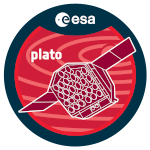A major problem in determining the current observed evolutionary stage of stars is to precisely know their ages. The two main age determination approaches are the isochronal method and, more recently, the gyrochronological method. The former is based on theoretical evolutionary models while the latter is based on stellar rotation period measurements. We particularly use the rotation period measurements for solar analogs in 5 open clusters of different ages to infer a relation between them and their ages. The obtained relation was then applied to a sample of 125 solar analogs with a determined rotation period observed by both Kepler and Gaia DR3. The final result was compared to their respective isochronal inferred ages. For 15 of our solar analogs sample, we also compare our relation to the ages derived from spectroscopic chemical indexes. We found that for solar analogs, the age obtained using the rotation period of stars in open clusters and isochronal ages are equivalent. This result could be improved with PLATO, since it will allow a more complete coverage of the open clusters in the solar neighborhood.
|
|
|
Abstracts > sorted by Authors > Anthony FrancysCalibrating ages for solar analogs using rotation in open clusters
1 : Universidade Federal do Rio Grande do Norte
(UFRN)
Dep. de Fısica Teorica e Experimental, DFTE, CP 1641, 59072-970, Natal, RN, Brazil -
Brazil
2 : Universidade Federal do Rio Grande do Norte
(UFRN)
|

 PDF version
PDF version
